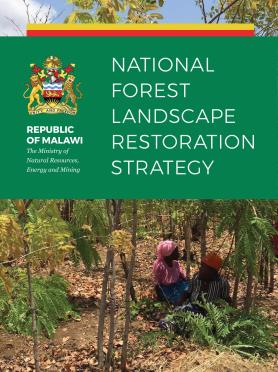Malawi Nationa Forest Landscape Restoration Strategy
Malawi Nationa Forest Landscape Restoration Strategy
Large-scale landscape restoration will create significant social, economic, and environmental benefits in Malawi that will include increased food, water, and livelihood security for many Malawians. Restoration of degraded and deforested land has an unparalleled potential to use nature-based solutions to address Malawi’s Vision 2020, Growth and Development Strategy III, and many additional components of current agricultural, land use, economic, social, and conservation policies. With a population growth rate of 3.1 percent per year and an average annual deforestation rate of 0.5 percent from 2000 to 2015, food security, resilience, and biodiversity will be increasingly important for Malawi as reflected in many national policies. Impacts from land degradation include the following:
- Lower agricultural productivity. An estimated 29 metric tons of soil per hectare are lost each year, reducing productivity of croplands (GOM 2001).
- Limited energy sources. Soil erosion and siltation from deforestation and poor agricultural practices are hindering efforts to expand hydroelectric power generation, decreasing an already limited supply of electricity and increasing costs to consumers. This problem is compounding Malawi’s dependence on wood to meet energy needs, causing deforestation to further exacerbate soil erosion and limit hydroelectric opportunity.
- Declining water quality and availability. Longer dry seasons and dried-up water supplies are impacting the Water Boards, which are responsible for supplying drinking water to urban residents, causing reductions in supply and increased costs to treat drinking water. The damages to the water sector have been estimated at US$11.8 million (World Bank 2016).
- Increased vulnerability to disasters. Conventional farming practices leave croplands highly vulnerable to climatic shocks. In 2016, the El Niño–induced dryness throughout the south and central regions of the country, and seasonal flooding in the north, resulted in a decline in crop yields (maize, rice, and wheat) by over 34 percent from the previous five-year average (FAO 2016).
- Lost revenue. Each year between 2001 and 2009, land degradation cost Malawi anestimated $244 million (6.8 percent of GDP)(Kirui 2015). Poor farming practices that degrade croplands for maize, rice, and wheat resulted in a loss of $5.7 million per year (Kirui 2015).

